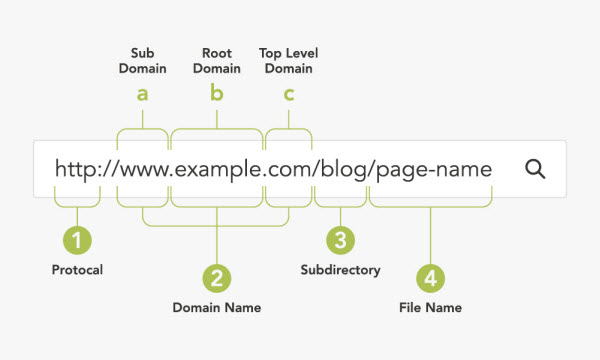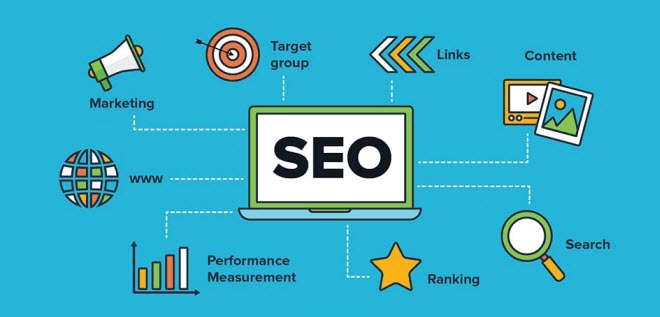Table of Contents
- Understanding the Importance of International SEO
- Developing Multilingual Content for Global Audiences
- Choosing the Right Domain Structure for International Websites
- Implementing Hreflang Tags to Indicate Language and Country Targeting
- Optimizing Technical SEO for International Websites
- Leveraging Social Media for International SEO
- Measuring and Analyzing the Success of International SEO Efforts
Understanding the Importance of International SEO
If you want to expand your business and sell products to people from all over the world, international SEO is a great way to do it. It can help you increase your website’s traffic and sales, as well as boost your brand awareness in different countries.
Start by thinking about which countries you want to target and what keywords are relevant for them. You may be surprised to learn that not all countries have the same search patterns. For instance, Mothers’ Day in the US is on a completely different day to that in the UK, so it’s important to adapt your keywords accordingly.
Once you have a list of potential countries and languages, research your competitors to see what they are doing. This will give you an idea of how to set up your own international strategy and how to get the best results.
It is also crucial to find out what local users are searching for and how they find the information they need. This will allow you to adapt your keywords and create content that is more relevant to them.
In order to be successful in international SEO, you’ll need to use hreflang tags, conduct market-specific analytics, conduct international keyword research and build links from international influencers. All of these practices will add up to an effective international SEO campaign.

Developing Multilingual Content for Global Audiences
65% of internet users prefer content that’s presented in their native language. This means that businesses that don’t translate their marketing content risk losing out on a huge chunk of the world’s market.
Localized content translates your brand into the language of your audience, which makes it more appealing to them and increases their likelihood to buy from you. It also gives them a sense of connection with your company, which is vital to their long-term loyalty.
The Right People to Create Your Multilingual Content:
If you’re going to build a successful multilingual content marketing strategy, you need to hire a team of experts who understand the culture and preferences of your target market and can write in the local language. Moreover, they should have a deep understanding of marketing and SEO techniques.
Integrate All Your Channels:
Whether you’re publishing blogs, social media posts, email campaigns or other marketing materials, you need to make sure that the content is relevant and easy to share across different platforms. This will ensure that your core message stays consistent and that you can reach the maximum number of potential customers worldwide.
Get a web content management system that supports your multilingual website:
Using a centralized system will help you keep track of all your translations and other details, such as metadata. This will save you time and money in the long run.
Choosing the Right Domain Structure for International Websites
There are a variety of domain structures that can be used to target international audiences. Each structure has its pros and cons, and it is up to you to decide which is best for your business.
Country code top-level domains (ccTLD) are best for larger, internationally known brands that have a strong presence in their target markets. These companies have access to extensive development, marketing and design resources to build multiple websites that are customised for regional audiences with localised content.
Alternatively, subdomains are a good option for smaller, less established brands looking to expand their international online presence. They are easy to set up and manage, and can create a single consolidated backlink profile.
However, subdomains have a number of limitations: They don’t provide search engines with an instant association between the URL and the country or language targeted, meaning they will receive weaker geo-targeting signals from Google.
Subdomains also need to be indexed separately from the parent domain and therefore will require more resources for link building campaigns.
It is important to ensure that you choose the right domain structure for your business, as this can make or break your international SEO success. It is essential to weigh up the pros and cons of each strategy before making a final decision, and to stay consistent with the way you structure your website across all international sites.

Implementing Hreflang Tags to Indicate Language and Country Targeting
Google hreflang tags are an essential part of a technical SEO strategy for any website that has a multilingual audience or wants to attract traffic from different regions. Without implementing them, you risk losing out on search engine traffic and letting your customers and clients find you in the wrong language or region.
Implementing Hreflang Tags is a complex process and requires a lot of attention to detail, especially for larger sites with multiple languages. However, it is not impossible to get started and can be done fairly easily for most small to medium-sized sites with some multilingual content.
Using On-Page Markup for hreflang
The most common way to implement hreflang tags is through on-page markup. These are often found in the HTML head of each page. They include a rel= “alternate” hreflang= “x” tag, which tells search engines that there is an alternate version of a page in another language.
This can help prevent duplicate content issues, which are a nightmare for many SEOs. For example, imagine you have two product pages with prices in US dollars on one and British pounds on the other. If you don’t use hreflang tags, Google may consider these as duplicates and will exclude them from the search results.
Adding hreflang tags to your XML sitemap is also an easy and effective way to implement them. Simply upload a CSV with your URLs and language and region codes, and this tool will create an XML sitemap for you in a matter of minutes.

Optimizing Technical SEO for International Websites
The best way to optimize for international websites is by thinking more locally. This means focusing on local keywords, targeting specific markets, and utilizing different tactics that work in each country.
When planning your international SEO strategy, think about how your target audience uses search engines and social media. Consider the channels they use to discover new products or services and how you can best answer their questions in their native languages.
A key aspect of this is ensuring that your content speaks the same language as your audience, which can be tricky. To solve this, ensure that your team is able to create content in the language of each market and optimize it accordingly.
Hreflang tags are an essential part of any multilingual website because they help Google know that you have content that’s relevant to each user’s specific region. This can prevent duplicate content issues and make it easier to rank for specific queries in the targeted countries.
If you have an e-commerce business, it’s also important to have localized contact information and content on your site. This helps you stand out from your competitors and increases the chances of people clicking on your site.
Doing this will also improve your SEO performance in those countries. It also allows you to build local links from the country that will have the most impact on your rankings and conversions.
Choosing the right approach to international SEO is often a complicated process that requires extensive research, planning, and implementation. In the end, it’s all about what’s best for your company and its customers.

Leveraging Social Media for International SEO
Every year, more and more businesses leverage social media to reach new audiences and drive more traffic to their websites. With Facebook averaging over 2.89 billion monthly active users, Instagram a whopping 1 billion followers, Pinterest and Twitter both with over 500 million monthly actives, and LinkedIn having more than 1 million members, the potential for using social media is limitless.
The biggest challenge is to make sure your social media marketing strategy works hand-in-hand with your overall SEO strategy. The good news is, there are some simple tactics that you can implement to make sure you’re taking full advantage of the power of social media to drive more traffic and sales for your business.
One of the first things you can do to start leveraging your social media is to create content that engages with your audience. Having stackable, mobile-friendly content that’s relevant to your audience’s interests will help you build brand awareness and get more people sharing your content.
Another important component of a successful social media strategy is to research the hashtags that your target market is most likely to use when searching for topics related to your product or service. There are many resources available to help you find these keywords and use them in your posts to drive more traffic to your website.
It’s also important to monitor your own social media to see what type of content gets the most reactions from your audience. You can do this by paying attention to the likes, comments, and shares that your posts receive. You can even test out different types of content to find which ones have the most engagement and then adapt your social media marketing strategy accordingly.

Measuring and Analyzing the Success of International SEO Efforts
Developing a strong, data-driven international SEO strategy requires a thorough understanding of how search engines determine your website’s intended audience. You can’t simply optimize your website to be appealing to anyone in the world; you need to understand what makes your brand unique and how it aligns with local expectations.
Content is Key to Successful International SEO Efforts
The key to successful international SEO is creating a seamless experience for users. This means answering questions in the region’s native language, ensuring your content is relevant to your target audience and providing them with the information they need to make decisions.
Links are a Key Part of Successful International SEO Efforts
Backlinks from relevant websites and blogs can boost your rankings in a number of regions. Generating local links, especially those that come from regional authorities and businesses, can help you stand out in the eyes of search engines.











